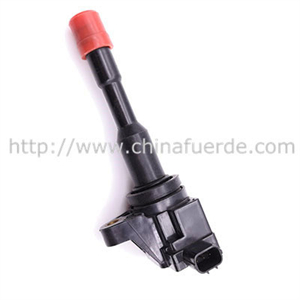What are the symptoms and solutions of car ignition coil failures?
Datetime: 24/10/2022 04:00 Visit: 1345
Consequences of car ignition coil failure:
(1) tempering;
(2) can not start;
(3) turbulence or deterioration of fuel economy;
(4) The spark plug is worn, and the ignition coil must increase its output, which may cause malfunction;
(5) The internal insulation of the ignition coil may be damaged, causing the ECU (control unit) that controls it to malfunction;
All ignition systems in modern gasoline engines use ignition coils to perform the same basic function, which works:
Convert the battery's 12 volts to the 20 or 30 kilovolts needed to send a surge to the spark plugs to initiate fuel combustion.
When current flows through an electrical conductor such as a coil, a magnetic field is created around the coil. The magnetic field is actually an energy store that can then be converted back into electrical energy.
There are two main factors that affect the strength of the magnetic field:
(1) Increasing the current applied to the coil enhances the magnetic field
(2) The more windings in the coil, the stronger the magnetic field.
Main factors that affect the voltage induced to the coil:
(1) The faster the magnetic field changes (or movement speed), the greater the change in the magnetic field strength and the greater the induced voltage.
(2) The greater the number of windings in the coil, the greater the induced voltage.

Car ignition coil is located between the batteries, and if the car is an older model, the distributor "distributes" the HT voltage it produces to each spark plug via thick rubber HT leads.
The solution to the fault of the car ignition coil?
1. External inspection
Check whether the casing of the ignition coil is clean, whether the high and low voltage coils are short-circuited, open-circuited, grounded, whether the spark strength meets the requirements, whether the casing is in good condition, whether the model is consistent, whether there is any crack or insulation overflow, and whether the connection of each terminal is firm. Wait.
2. Measuring resistance method
(1) Check the primary winding resistance. Use a multimeter to measure the resistance between the "+" and "-" terminals. (2) Check the secondary winding resistance. Use a multimeter to measure the resistance between the "+" and the central high voltage terminal. (3) Check the resistance of the resistor. Connect a multimeter directly to the two terminals of the resistor.
3. Test lamp inspection method
Connect the 220V test light to the terminal of the primary winding, if the light is on, it means that there is no open circuit fault, otherwise it is an open circuit. When checking whether the winding has a ground fault, one end of the test lamp can be connected to the primary winding, and the other end is connected to the casing. If the light is on, it means that there is a ground fault, otherwise it is good.
For the secondary winding, because one end of it is connected to the high-voltage jack and the other end is connected to the primary winding, during the inspection, when one contact pin of the test lamp is connected to the high-voltage jack and the other contact pin is connected to the low-voltage post, if the test lamp If the light is bright, it means there is a short circuit fault; if the test light is dark red, it means there is no short circuit fault; if the test light does not turn red at all, you should pay attention to observe, when the contact pin is removed from the post, see if there is any spark. , if there is no spark, the winding has been disconnected.
4. Insulation performance test of ignition coil
(1) During the test run, use the oscilloscope to detect the waveform when the fault occurs. If the waveform changes after the car is warmed up, it must be replaced.
(2) During the test run, the first time the fault occurs, use an infrared thermometer to detect the working temperature of the secondary coil. If it exceeds 95°C, it means that the insulation of the ignition coil is aging and there is a short circuit inside, which must be replaced.
( 3 ) In the test run, the first time the fault occurs, use an ohmmeter to detect the resistance value of the secondary coil. If the resistance value decreases significantly after the hot car, it means that there is an internal short circuit and must be replaced.
5. Fire intensity detection
(1) Check the spark strength and continuity on the universal electrical test bench: When checking the high voltage generated by the ignition coil, it can be tested on the test bench in conjunction with the distributor. If the spark of the three-pin discharger is strong and can break down When the gap is more than 5.5 mm, it means that the ignition coil has good ignition strength.
Related Message
-
Car engine parts manufacturer tells you about the structure of automobile engine
2022-12-06 -
Difference between spark coils and ignition plugs
2022-11-28 - 2022-11-26
- 2022-11-17
- 2022-11-10




